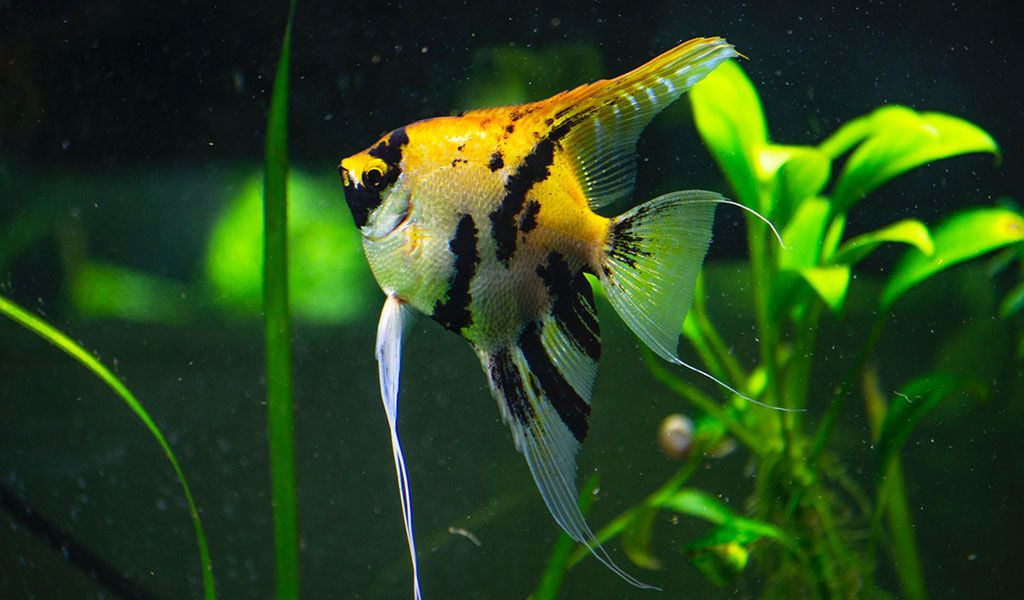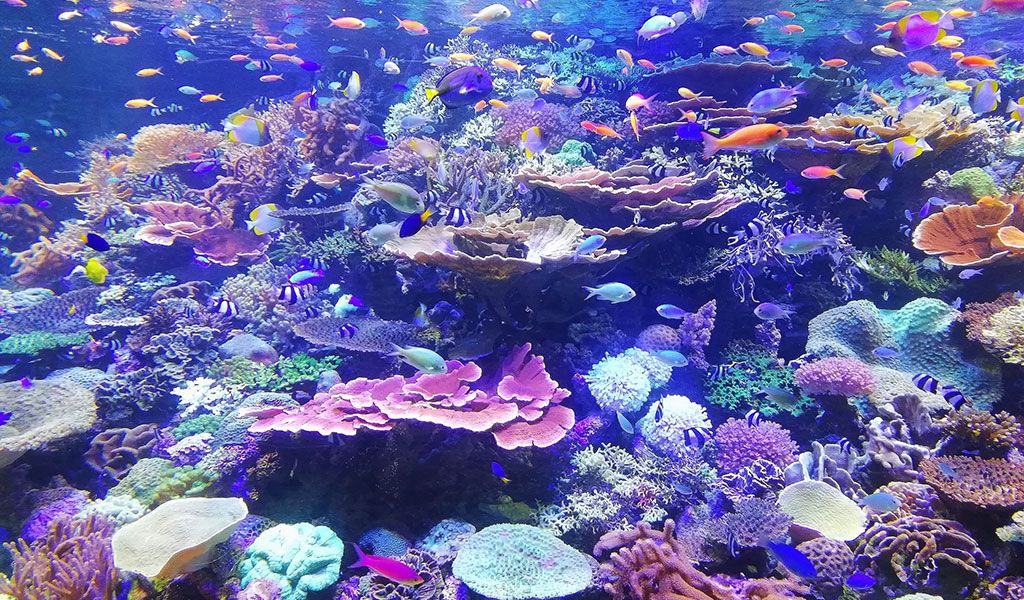Excessive ammonia level is detrimental to fish skin, gills, and fins. Seriously, it can be fatal to your fish. So what can you do in the face of excessive ammonia in fish tanks? If you have no idea now, just read on. After reading, you will walk away with a much better understanding of ammonia in fish tanks. And you will learn ways to deal with excessive ammonia in fish tanks.
What is ammonia in fish tanks
Ammonia is a chemical compound, which is commonly composed of unionized ammonia (NH3) and ionized ammonia (NH4+). It is a result of the build-up and decomposing of fish waste, uneaten fish feces, and rotten organic substances. Also, fish release ammonia through their gills.
A high ammonia level in a fish tank makes ammonia release hard for fish, which causes stress on fish. As fish take in water rich in ammonia and release it through their gills, their gills will be damaged. Then fish would become hard to breathe. Furthermore, with a high ammonia level, all aquatic pets may suffer ammonia poisoning or death. Aside from that, ammonia can be a nutrient source for aquatic plants. However, excessive ammonia will also damage plants.
In short, ammonia is fatal to fish. Hence, it is essential to reduce ammonia in fish tanks, and the ammonia level should be approached zero. In this case, building a biological filter and cycling your new aquarium can be critically crucial. The biological filter provides places for nitrifying bacteria to grow, which helps to remove ammonia.
Ammonia cycle in fish tanks
Actually, the ammonia cycle can be one part of the nitrogen cycle. In other words, ammonia is the start of the nitrogen cycle. As fish waste and rotten organic matter accumulate and decompose, ammonia will be formed in a fish tank. Next, the ammonia will be converted to nitrite, and then to nitrate and nitrogen gas.
Generally, you should fully cycle your new fish tanks. Otherwise, the New Tank Syndrome will appear, which will lead to color fading and inactive fish.

What causes high ammonia levels in fish tanks
Before taking action to tackle high ammonia levels in fish tanks, you’d better know the causes first. In this segment, we will cover the causes of high ammonia levels in fish tanks.
- The build-up and decomposition of fish waste, uneaten fish feces, dead fish and plants, plus rotten organic substance.
- Fish breathing: Fish can release ammonia formed in their body through their gills.
- Overfeeding. Overfeeding will result in more uneaten food in fish tanks.
- Overstock. Overstock means more waste.
- Improper tank maintenance. It will lead to poor water quality and unhealthy living conditions.
How to remove ammonia from fish tanks naturally
Water changes and tank cleaning
Doing water changes can be effective. To reduce stress on aquatic pets, you can change 50 percent of the water first. After the water changes, test the water parameters. If the ammonia level remains high, it is feasible to change 15-30 percent of the water and retest the water. Additionally, during the water changes process, you can also remove fish feces and dirt, plus clean your fish tank.
In this case, a siphon gravel cleaner will help you a lot. It makes sense in tank gravel and sand cleaning, dirt removing, and water changing. With the help of a gravel cleaner, daily fish tank maintenance will be easier and time-saving.
Beneficial bacteria
Growing beneficial bacteria is not the most effective way to remove ammonia from fish tanks. The two beneficial bacteria, nitrifying bacteria and denitrifying bacteria, help to convert ammonia to nitrite, and then to nitrate and nitrogen gas. After that, the nitrate will be absorbed by aquatic plants or algae.
Aquarium filter media
Filter media provide room for beneficial bacteria to grow. But, if the filter media are trapped in fish waste and unnecessary debris or substances, you should clean the media gently with water in your tank. By the way, if necessary, you can replace the filter media.
Aquatic live plants
Adding more aquatic live plants is helpful to reduce and control ammonia levels. Because the live plants can consume ammonia in your tank. As the plants absorb ammonia in the tank, the ammonia level will be relatively reduced.
How to lower ammonia in saltwater tanks
Change aquarium water
In saltwater tanks, partial water changes may not be effective. As the ammonia level decreases slightly, the pH level will increase because of the buffering effect of the new water, then the remaining ammonia will be more harmful. Hence, you’d better change the water with ammonia-neutralizing products. For instance, change 50 percent of aquarium water. The ammonia-neutralizing products can transform ammonia into a non-toxic form, then it can be broken down by beneficial bacteria or be removed by doing water changes.

Remove dead fish
If you find dead fish in saltwater tanks, especially large dead fish, you’d better remove them. Because it takes time to decompose, which will improve ammonia levels. Exactly, ammonia increasing is harmful to other aquatic pets in the tank.
Reduce or stop feeding
Stop-feeding can be an excellent choice. Because feeding means more waste, which will raise the ammonia level. Besides that, you can also remove some fish from another aquarium.
Grow beneficial bacteria
In saltwater aquariums, growing beneficial bacteria, like nitrifying bacteria, are helpful to transform ammonia into nitrite, and then to nitrate. As a result, the ammonia level will be greatly reduced.
The bottom line
To conclude, ammonia is detrimental to fish. In daily maintenance, you can observe the ornamental fish. You’d better test your water immediately and find the root cause once you find something abnormal, like inactive, lethargy, loss of diet, color fading, gasping for air on the water surface, etc. By the way, each time you want to introduce fish to a new tank, it is better to cycle the tank first. It can greatly lower the risk of facing health issues exactly.
For more about ammonia in fish tanks, you can read:
